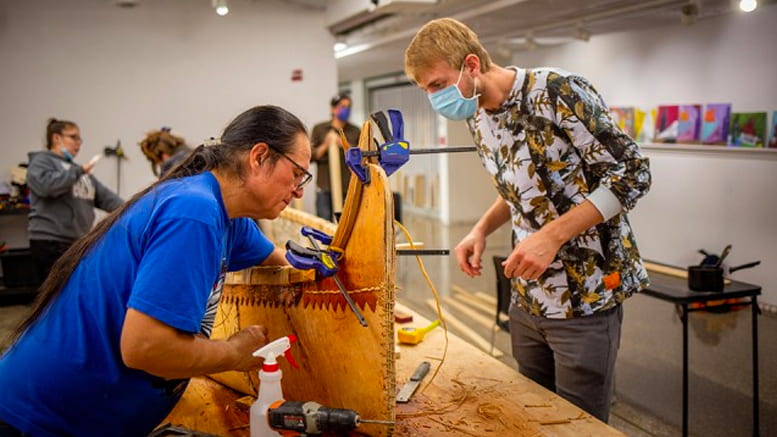Wayne Valliere, an artist-in-residence at the Center for Native American and Indigenous Research (CNAIR) at Northwestern, is one of only a handful of Native birchbark canoe builders remaining in the U.S.
Valliere, whose native name is Mino-Giizhig, which means good sky, is working to keep the canoe-building craft alive by sharing his skills and knowledge with students. Over the last few weeks, with the help of students, Valliere began building a traditional 16-foot birchbark canoe.
Valliere was first exposed to canoe making at the age of 14 and built his first canoe two years later. He learned the craft from his elders in his Lac du Flambeau Band of Lake Superior Ojibwe. It is a skill that was once commonly passed from generation to generation. But by the 1900s, the knowledge began to deplete quickly. Now, Valliere says he is one of six remaining birch bark canoe builders among the Anishinaabeg people.
“Our birchbark is so important because it signifies our identity,” Valliere said. “It’s our connection to our past. It’s very important that we don’t lose this craft because it connects us to our grandmother, the Earth.”
Valliere said teaching Northwestern students this rich history and the cultural tradition of canoe building is critical to the future of the planet. The canoe Valliere is building is his 38th canoe. Once completed, the canoe will remain at Northwestern.
Land acknowledgement
The Northwestern campus sits on the traditional homelands of the people of the Council of Three Fires, the Ojibwe, Potawatomi and Odawa as well as the Menominee, Miami and Ho-Chunk nations. It was also a site of trade, travel, gathering and healing for more than a dozen other Native tribes and is still home to over 100,000 tribal members in the state of Illinois.
Read more in Northwestern Now.

